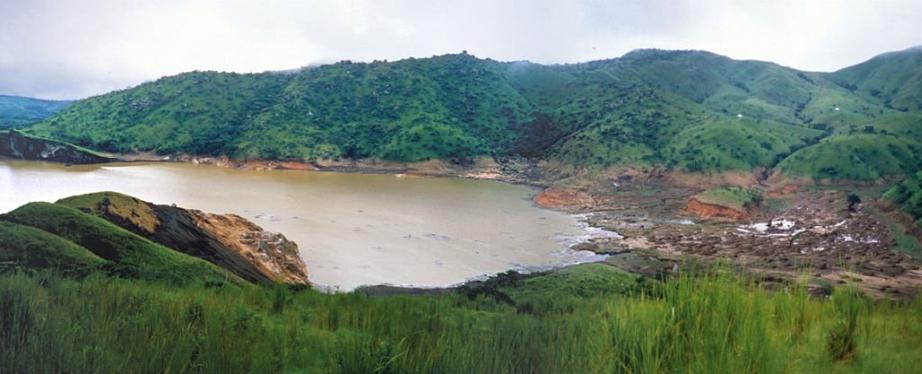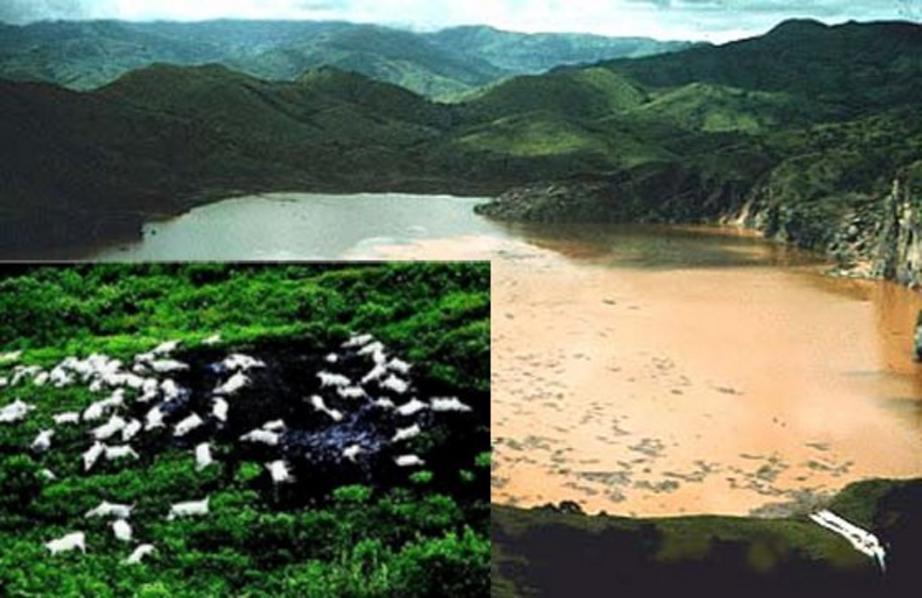This small lake in Africa once killed 1,700 people overnight, and we still don't know why
On 21 August 1986, one of the strangest and most mysterious natural disasters in history took place at Lake Nyos - a lake formed atop a volcanic crater in northwest Cameroon.
Without warning, the lake released hundreds of thousands of tonnes of toxic carbon dioxide - estimates range from 300,000 to up to 1.6 million - and this silent death cloud spread out over the countryside at nearly 100 km/h (62 mph), suffocating an estimated 1,746 people and more than 3,500 livestock within minutes.
The effect was as devastating as it was swift, and with the severity of a Biblical plague, it felled locals and wildlife alike by starving the air of oxygen within a 25-km (16-mile) radius of the lake.
Many people from the villages of Cha, Nyos, and Subum were silently asphyxiated in their sleep. Some were found with blood around their noses and mouths.
When the few remaining survivors woke up, they found no disturbances, no violence - just corpses. Even the flies had dropped dead.

Reporters in the area described it as like looking at the aftermath of a neutron bomb.
Joseph Nkwain, who woke up 3 hours after the cloud hit, recounted the experience to Plymouth University researcher, Arnold H. Taylor:
"I could not speak. I became unconscious. I could not open my mouth because then I smelled something terrible... I heard my daughter snoring in a terrible way, very abnormal...
When crossing to my daughter's bed ... I collapsed and fell. ... My arms had some wounds, I didn't really know how I got those wounds. I wanted to speak, my breath would not come out... My daughter was already dead."
It's one of the most gut-wrenching natural events in recorded history, and scientists still have no idea what triggered it.
"It was one of the most baffling disasters scientists have ever investigated. Lakes just don't rise up and wipe out thousands of people," George Kling, an ecologist at the University of Michigan, told The Guardian back in 2005.
 Dead cattle after the event. Credit: US Geological Survey
Dead cattle after the event. Credit: US Geological Survey
So what do we know?
At the time, researchers determined that Lake Nyos had released a massive amount of CO2 at around 9pm, and because CO2 is heavier than the surrounding air, it quickly sunk into the valleys below, blanketing everything in a sheet of toxic gas 50 metres thick.
Usually, those hundreds of thousands of tonnes of CO2 are kept contained in the lake, but this time, something blew the lid off.
As David Bressan explains for Scientific American, volcanic gases emanating from the ground below the lake dissolve and become concentrated in its deepest waters, and the tropical temperatures form a sort of 'cap' of warm water above this cooler water.
It's not clear what 'broke the seal' and allowed the deep, contaminated water to rise, but it could have been an earthquake, a landslide, or a volcanic eruption, or even something as simple as heavy runs muddling the water levels.
The trigger was silent, but the effects were catastrophic.
"The lake literally exploded in what's known as a limnic eruption, sending a fountain of water over 300 feet (91 metres) into the air and creating a small tsunami," Atlas Obscura reports.
In the absence of a scientific explanation, conspiracy theories reared their inevitable heads, with some locals convincing themselves that the eruption had been triggered by an undisclosed bomb test, carried out by the Israeli and Cameroon governments.
But the timeline just doesn't fit.
Weirdly enough, a similar event happened nearby just two years earlier at Lake Monoun, where a CO2 eruption killed 37 people. No one knows what triggered that eruption either.
To prevent these lakes from exploding once more, in 2001, engineers installed pipes in both to suck CO2 from the lake bed, and release it very gradually into the air.

Another set of pipes were installed in 2011 after researchers warned of a gas burst "that could be bigger than either of those disasters".
With that problem solved, another one arose - the natural wall surrounding Lake Nyos started to weaken, and the concern was that if something were to shift the earth around it and dislodge it, there's no telling what would happen if the contents spilled out.
A dam has since been built around the wall to protect it, and while researchers think it will hold into the near future, processes such as weathering or lake overflow "can cause instant failure".
Let's just hope scientists figure out a way to predict the lake's activities well in advance, so nothing like the events of 30 years ago happen again.

